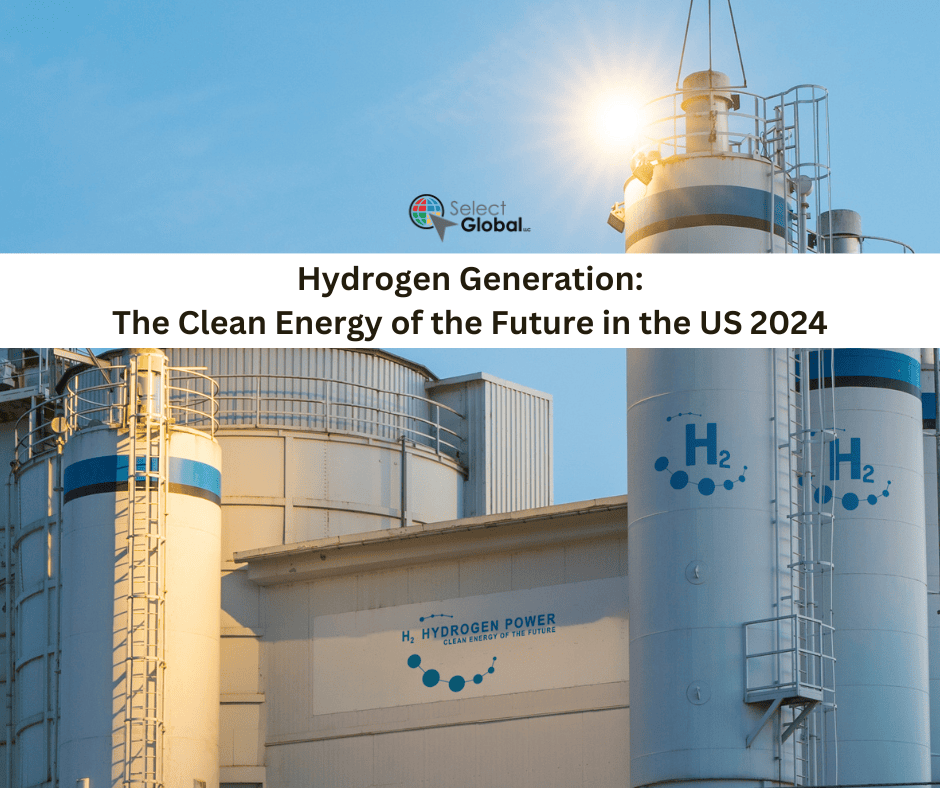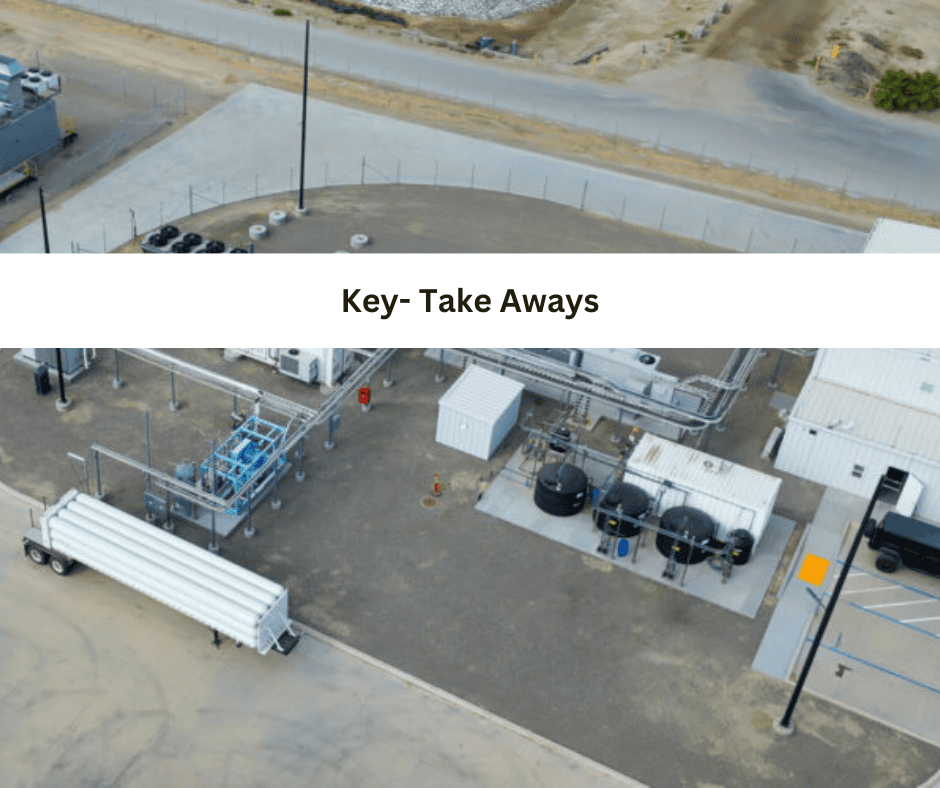
The electrification of various sectors, notably transportation and industry, is gaining momentum as a key strategy to combat climate change. Central to this transition is the evolution of hydrogen production and delivery operations. First things first, if you are new to hydrogen energy or hydrogen fuel, let’s define it:
Hydrogen fuel also referred to as hydrogen power, is an alternative energy source with the potential to revolutionize how we power our homes, vehicles, and businesses. So why Hydrogen? Because it is a clean-burning fuel that emits only water as a byproduct, making it an eco-friendly alternative to fossil fuels. Therefore, the benefits of hydrogen electricity for the environment are among its key features. Unlike fossil fuels, hydrogen emits no hazardous pollutants when burned. Furthermore, hydrogen may be created from renewable energy sources, making it a sustainable energy source.
Jamie Newell, an expert and a devotee of hydrogen fuel, discusses why hydrogen energy will transform the way we utilize fuel in today's operations and in the future.
“The US economy has focused too heavily on the electric vehicle battery sector as a solution to decarbonization when the fact remains that EV’s are not a conducive form of transportation for everyone. Therefore, we must diversify the way we make and use energy for these efforts to be successful. Enter hydrogen fuel, where its primary use will be for long haul travel as it allows heavy duty freight vehicles, cargo airplanes and locomotives to travel longer distances with less refueling while completely garnering more efficiency in the ways we distribute goods. Eventually this will sprawl down to the passenger automobiles, so imagine a day where every electric vehicle charging station is powered by hydrogen while also providing hydrogen as fuel to both freight and passenger vehicles. That is the future of our transportation economy and planning efforts are underway with the support of many different federal and state funding mechanisms. “
Hydrogen, particularly green hydrogen from renewable energy sources, offers a promising pathway for deep decarbonization. Jamie adds, “While the infrastructure development for hydrogen fuel may seem to be in its infancy, hydrogen generation facilities are being established within the Hydrogen Hubs across the country to support industries such as ammonia, cement, steel, glass, electronics, fertilizer, and other high heat industrial users. Hydrogen’s early adoption is also occurring with energy companies and municipalities that are seeking to blend hydrogen into natural gas pipelines as a way of reducing greenhouse gas emissions while bolstering its efficiency. Federal funding is flowing into these H2 hubs and the benefit to these industries is that they are able to take advantage of the many tax credits available, particularly 48C of the Inflation Reduction Act.”
If you want to learn more about this topic, read on because this blog examines the developments and strategic positioning of hydrogen operations in the Southeast region and other specific locations of the United States, using up-to-date data and trends as of 2024.

Hydrogen Production in the Southeast
The Southeast region of the USA is emerging as a significant hub for hydrogen production. States like Texas, Louisiana, and Florida are leveraging their existing industrial infrastructure and abundant renewable energy resources to spearhead hydrogen initiatives. Recent investments and policy incentives are accelerating the development of hydrogen production facilities.
An article from the Office of Clean Energy Demonstrations selected California's Arches hub and the Pacific Northwest States for federal funding under the Regional Clean Hydrogen Hubs program. These regions were awarded due to their strong infrastructure, innovative approaches, and commitment to advancing clean hydrogen technologies. The Arches hub in California stands out for its comprehensive plans integrating hydrogen production, distribution, and end-use applications. Meanwhile, the Pacific Northwest States were recognized for their collaborative efforts across state lines to develop a robust hydrogen economy, leveraging their rich renewable energy resources.
Texas Hydrogen Hub
In 2024, Texas will continue to lead with its expansive hydrogen production capabilities, supported by the state's robust wind and solar energy sectors. HyVelocity Hub, a collaborative project, aims to produce and deliver green hydrogen at scale.
Louisiana's Industrial Backbone
Louisiana's industrial corridor is transforming with substantial investments in hydrogen production. The state's petrochemical plants are integrating carbon capture and storage (CCS) technologies to produce blue hydrogen, a major step towards reducing emissions.
Florida's Clean Energy Vision
Florida is capitalizing on its solar potential to produce green hydrogen. The state has seen multiple pilot projects begin with the goal of using hydrogen for energy storage and transportation.
New Mexico and Oklahoma are advancing incentives for alternative fuels to promote clean energy and reduce emissions. New Mexico is part of the federal initiative to establish regional clean hydrogen hubs, receiving significant funding to support hydrogen production, storage, and use, which will help decarbonize various sectors and create jobs. Oklahoma's incentives for hydrogen and alternative fuels aim to boost the state's clean energy sector, reduce dependence on fossil fuels, and encourage innovation in sustainable energy solutions.

Strategic location and infrastructure are critical for the effective deployment of hydrogen technologies. The Southeast's existing infrastructure, including pipelines, ports, and industrial complexes, provides a strong foundation for hydrogen delivery and utilization.
Highlights:
Pipelines and Storage:
The existing network of natural gas pipelines is being repurposed and expanded to transport hydrogen. Innovations in hydrogen storage technologies, such as underground salt caverns, are also being explored.
Ports and Export Facilities
Ports in the Southeast, particularly along the Gulf Coast, are being developed as key export hubs for hydrogen. These facilities will have an important impact on international hydrogen trade, connecting the USA to global markets.
Industrial Applications
The region's industrial sectors, including chemicals, refining, and manufacturing, are major consumers of hydrogen. Initiatives to replace fossil fuels with hydrogen in several industries are gaining momentum.

The hydrogen economy is bolstered by supportive policies, technological innovations, and rising market demand. Data analysis from 2024 reveals significant trends:
Market Growth
The global hydrogen market is projected to grow at a compound annual growth rate (CAGR) of 9.2% from 2024 to 2030. The USA, with its proactive hydrogen strategy, is poised to capture a substantial share of this market.
Cost Reduction
Advancements in electrolysis technology and economies of scale are driving down the cost of hydrogen production. By 2030, green hydrogen is expected to become cost-competitive with traditional fossil fuels.
Policy Support
Federal and state policies, including tax incentives, grants, and mandates, are crucial in supporting hydrogen projects. The Infrastructure Investment and Jobs Act (IIJA) and the Inflation Reduction Act (IRA) of 2022 provide significant funding for hydrogen infrastructure.

Several landmark projects are underway, demonstrating the USA's commitment to hydrogen as a cornerstone of the clean energy future:
Hydrogen Energy Earthshot
The Department of Energy's (DOE) initiative aims to reduce the cost of clean hydrogen by 80% to $1 per kilogram within a decade. This ambitious target is driving innovation and investment across the hydrogen value chain.
Southern States Hydrogen Hub
A multi-state collaboration in the Southeast is focused on developing a regional hydrogen economy. This hub aims to integrate renewable energy, hydrogen production, and industrial demand centers.
Private Sector Investments
Companies like NextEra Energy and Chevron are making significant investments in hydrogen projects. NextEra's plan to build a green hydrogen plant in Florida and Chevron's partnership with Caterpillar to develop hydrogen-powered heavy machinery are noteworthy examples.

The electrification revolution - fueled by hydrogen generation and transport, is gaining traction in the Southeast and other specialized regions of the United States. The strategic positioning of hydrogen operations, supported by robust infrastructure and favorable policies, is paving the way for a sustainable energy future. Keeping abreast of the latest developments and data is crucial for stakeholders looking to capitalize on the hydrogen economy.
By staying informed and engaged, we can all contribute to the ongoing transformation towards a cleaner and more sustainable energy landscape.

Jamie Newell
Strategic Development Consultant, Eastward H2
In her spare time, she enjoys beekeeping, bird hunting with her dog, “Pax,” paddle boarding, and volunteering in her community and with her church. Raised by a distinguished Army Veteran, Jamie proudly supports our nations heroes through her involvement in the All Secure Foundation and Shields and Stripes organizations.
For further reading, explore these references:
Hydrogen Economy Outlook (https://www.hydrogeneconomyoutlook.com)
DOE Hydrogen and Fuel Cells Program (https://www.energy.gov/eere/fuelcells/hydrogen-and-fuel-cell-technologies-office)
DOE Hydrogen and Fuel Cells Program (https://www.energy.gov/eere/fuelcells/hydrogen-and-fuel-cell-technologies-office)
International Energy Agency (IEA) Hydrogen (https://www.iea.org/reports/the-future-of-hydrogen)
Infrastructure Investment and Jobs Act (https://www.congress.gov/bill/117th-congress/house-bill/3684)
Hydrogen Energy Earth shot (https://www.energy.gov/eere/fuelcells/hydrogen-earthshot)
Southern States Hydrogen Hub (https://www.sshydrogenhub.org)
NextEra Energy Hydrogen Projects (https://www.nexteraenergy.com/what-we-do/hydrogen.html)
Regional Clean Hydrogen Hubs Selections for Award Negotiations (https://www.energy.gov/oced/regional-clean-hydrogen-hubs-selections-award-negotiations)
NextEra Energy Hydrogen Projects (https://www.nexteraenergy.com/what-we-do/hydrogen.html)
Regional Clean Hydrogen Hubs Selections for Award Negotiations (https://www.energy.gov/oced/regional-clean-hydrogen-hubs-selections-award-negotiations)





